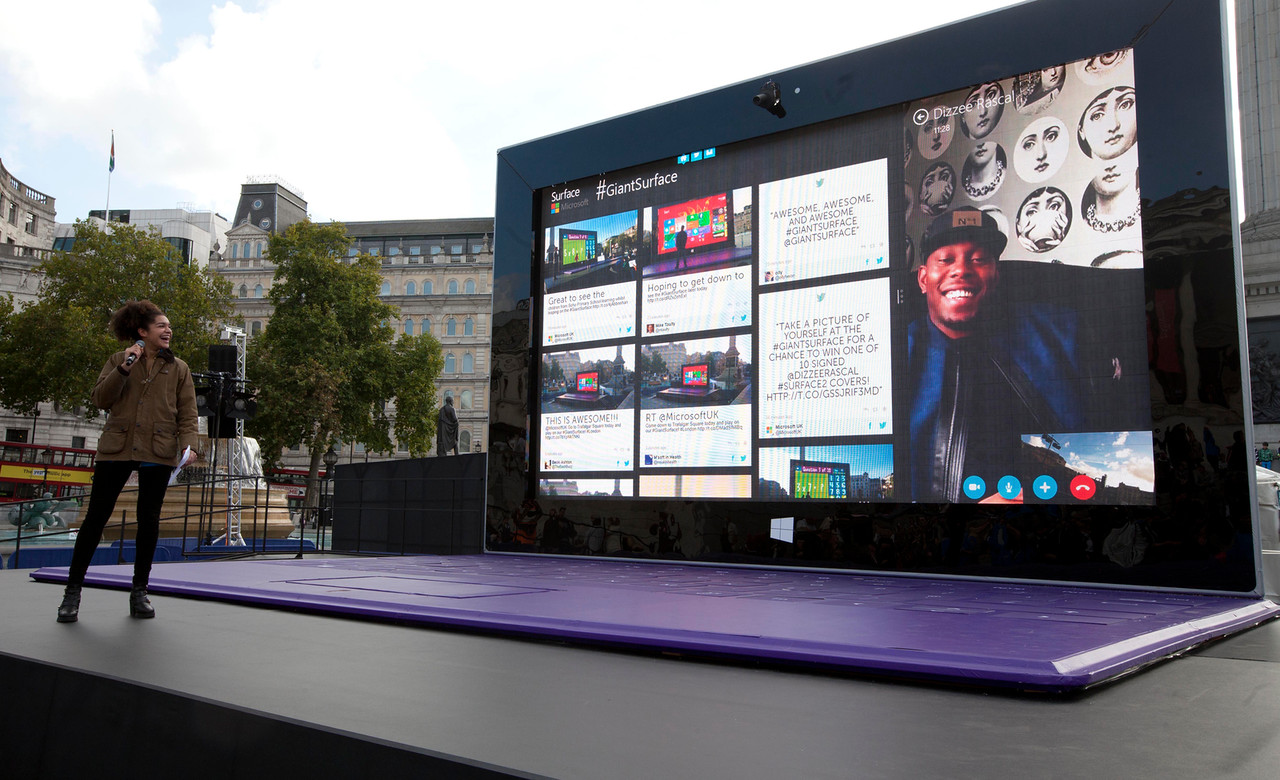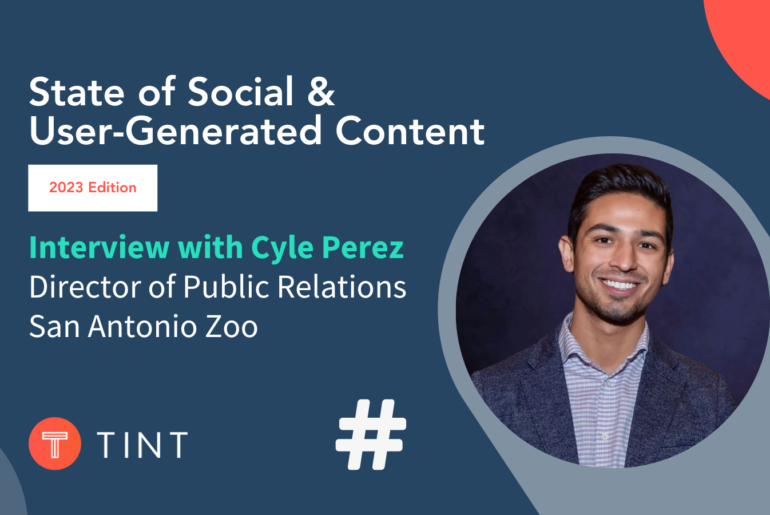User generated content (UGC) is a big focus at TINT, and it should be a big focus for all businesses looking to build an online community, get new leads, and make more sales. We’ve talked a lot about UGC and how to use it to increase the results of your marketing efforts, but we really wanted to show you why.
With the state of marketing being what it is today, you can technically get by without UGC. You can get some new clients and make some sales. You won’t, however, be able to maximize your profit, and you definitely won’t reach your full ROI potential. This sounds like a big claim, but we’ve got three case studies spanning multiple industries that back it up.
Before we jump into the case studies, we’re going to take a look at why UGC and ROI are so intricately linked.
Why UGC and ROI are Correlated
Sharing UGC on social media and on your website is more than just a marketing strategy or a passing buzzword. It’s a tool that can be used to create trust and a sense of authenticity amongst your website visitors and social media followers, and in time, it can help your brand to create an engaged and loyal community.
Creating campaigns that focus purely on UGC can build an engaged community, and with it, more loyal customers, as shown in this example with Teva Socks.
With the state of marketing today, traditional methods of marketing aren’t as effective. The reason for this isn’t just that the competition on ad platforms is so stiff (though it definitely is); it’s also because traditional forms of advertising are no longer trusted. Users might ignore the same Google-placed Ad for your business on 4 different sites, but will click if their friends share UGC about the business. The average consumer is now the best advocate you can have, with word of mouth marketing reigning supreme in today’s marketing process.
UGC doesn’t have to only stay on social media; sharing it your site and even in person can help extend the reach of your campaigns and boost your ROI further, as shown in this example from Microsoft.
UGC works as social proof, with everyone that’s engaging with your brand online essentially vouching for you and your products. This is more powerful than any form of marketing, and you’ll see your number of clients and your profit increase if you continually share UGC on different platforms online. Since UGC can be created in mass quantities without costing you a dime, it will lower your marketing costs. With an increased profit and lower overhead costs, you’ll be looking at your largest possible ROI.
3 Case Studies that Show How UGC Maximizes ROI
While some case studies end up with results that seem more like flukes (we’ve all seen the ones that “prove” some crazy things), when multiple case studies come up with consistent findings again and again, that shouldn’t be ignored.
While there are a ton of case studies out there about UGC, these case studies run by three different brands show how UGC can maximize ROI.
ROI and UGC is closely linked, and brands need to be paying attention to both.
1. Nielson Global
Nielson Global ran an in-depth survey and study in 2015 to find out how consumers felt about the ads they were seeing, and what types of advertising they trusted most and responded best to. They found that there were three important factors in how well your campaigns performed, which were reach, resonance, and reaction. UGC and other consumers’ opinions, it turns out, resonated a great deal with consumers.
Some important highlights of the study include:
· Two-thirds of users trust the opinions of other consumers posted online
· Recommendations from family and friends were the most trusted form of advertising (with 83% of users trusting in the recommendations), with a branded website coming in second
· Only approximately 6 in 10 users trust more traditional sources of advertising
Considering that 83% of users trust opinions from those that they know and 63% trust the opinions of other random consumers posted online, but only 57-58% trust ads on TV or in Newspapers, UGC is exceptionally important and will likely resonate best with your audience.
2. Percolate
Percolate recently wrote a report on their research that evaluated how businesses could improve ROI with user generated content. The study took a close-up look at Millennials in particular, who are heavily influencing and shaping the world of marketing today.
Some important highlights of the case study include:
· 86% of Millennials believe that UGC is a good indicator of the quality of a product, brand, and/or service
· 8 in 10 Millennials say that UGC has influence over what they buy, with 25% saying that UGC has “a lot” of influence and 59% saying that UGC has “some” influence
With the majority of Millennials believing that UGC is an indicator of high quality, it makes sense that so many of these users would allow it to influence their buying behavior and purchase decisions, and that this impact directly translates into more sales (and higher ROI) for businesses.
3. TINT Case Studies
TINT works with businesses of all sizes and in any industry. We’ve helped brands in a large number of industries implement UGC on their sites and increase their ROI because of it. With brands like Universities and Travelocity seeing increased ROI thanks to UGC, it’s clear to us that UGC isn’t just beneficial for brands with physical products.
We had three particularly notable case studies, which were from campaigns we ran for Speciality Produce, Travelocity, and The Bubble Foundation.
Specialty Produce is a family owned fresh produce supplier, serving both wholesale and retail customers. They utilized TINT and UGC to share the food’s journey from farm to table online with their customers, aided by the hashtag #specialtyproduce that was featured prominently in their warehouse (displayed below)and on their site with user generated content. As a result, they saw a 13% increase in engagement on posts that were attached to a hashtag, and had a boom in user generated content being shared to the hashtag. You can see more about this case study here.
When Travelocity ran a campaign that prioritized UGC, it became their most successful marketing campaign to date. They hosted a contest that focused on inspiring UGC with the hashtag #IWannaGo and offered a prize of a dream vacation. More than 25,000 people jumped at the chance to win and have fun with the contest, and they each created content and helped to spread Travelocity’s message across multiple social media accounts, gaining new followers at ridiculously low costs compared to typical lead generation campaigns. They also got more engagement; in 26 posts aggregated on Travelocity, 95% of visitors engaged and scrolled through the content. You can learn more here.
Finally, The Bubble Foundation’s #wearyellowforseth campaign had incredible success. Seth is a young boy who needed a bone marrow transplant, and to support him, his family asked for people to wear yellow, his favorite shirt. They launched the hashtag #wearyellowforseth, which blew up instantly and even garnered celebrity attention. The Bubble Foundation worked with us to create a website that allowed UGC images from multiple platforms to be displayed in one place. They received thousands of images. Seth received tons of images, the family received financial donations to offset the cost of the surgery, and the Bubble Foundation gained the kind of exposure that you can’t put a price tag on. It was a win-win for everyone. You can read more about this case study here.
These case studies all came from brands in very different industries and in very different sizes, but showed consistent results for the power and influence that UGC can have on both online engagement and ROI.
Final Thoughts
UGC isn’t just necessary to build social engagement and the number of followers you have on Instagram; it’s an essential selling tool that shouldn’t be overlooked. While you may be able to sell without it, you’ll miss out on its optimum potential, and you won’t reach maximum ROI. These case studies discussed above were all from different types of businesses in different industries, demonstrating the universality of these statistics.
Want to learn more about how to maximize your ROI with UGC? Drop us a line for a free strategy session!




